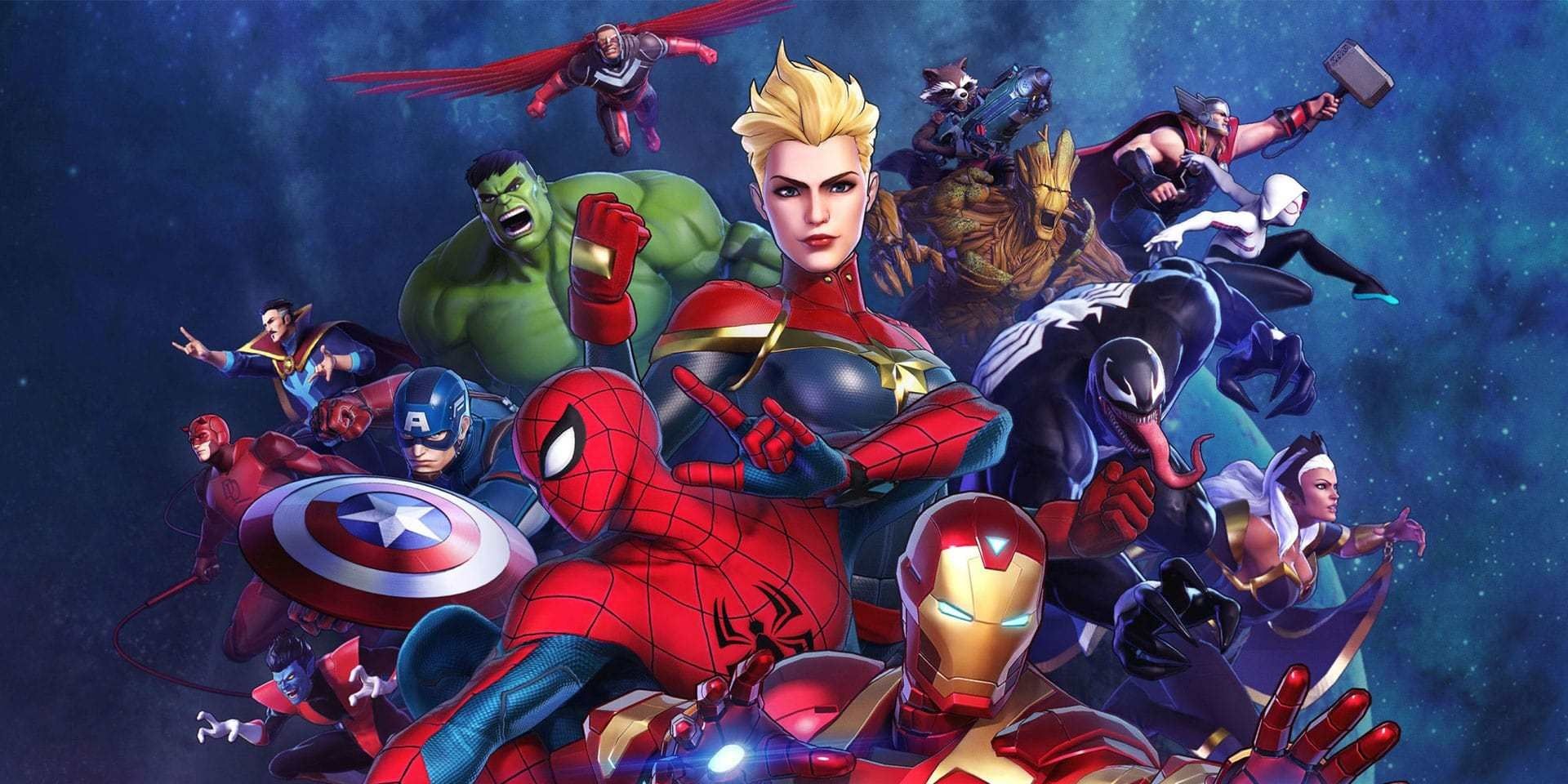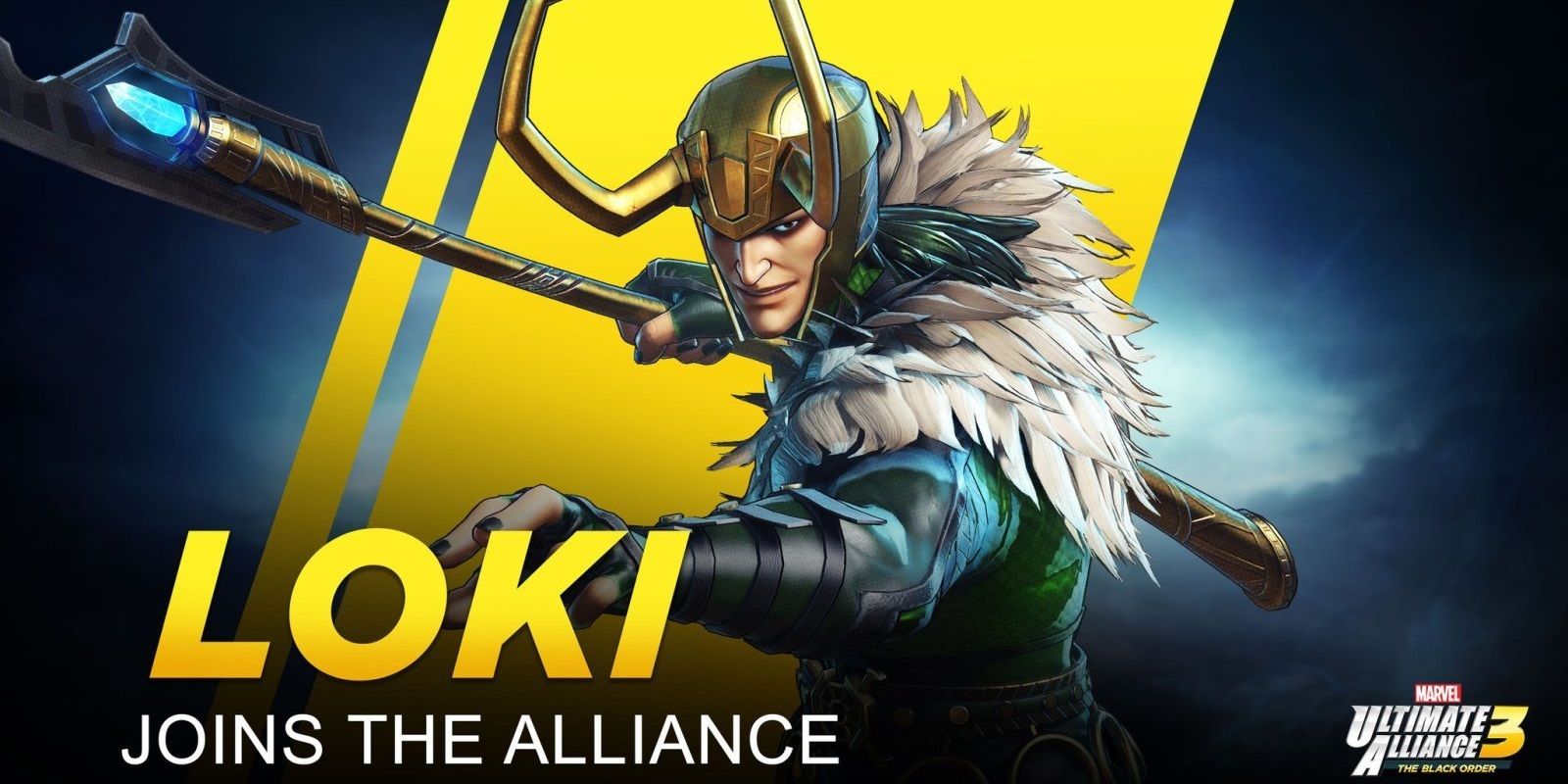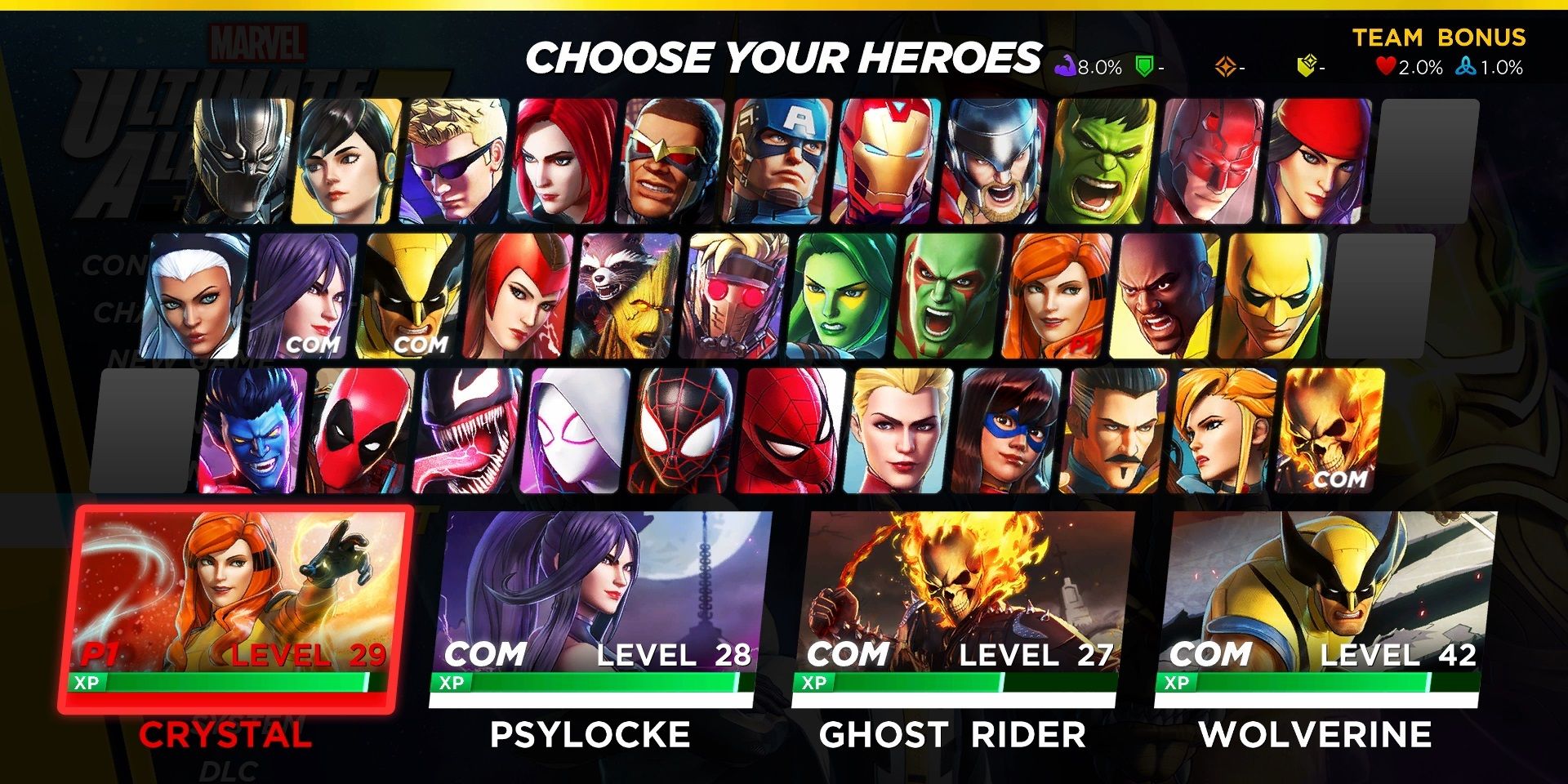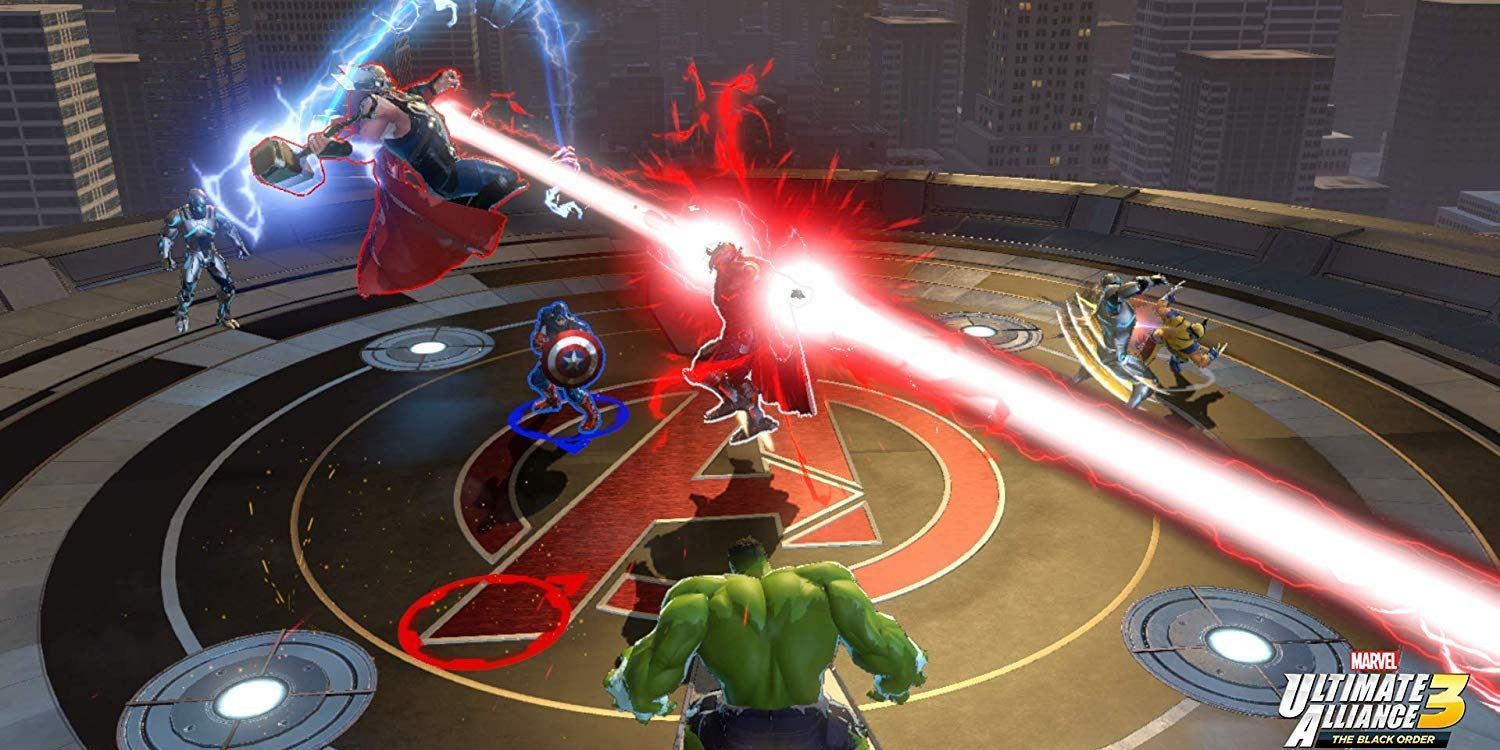The joy of fighting with an Endgame-level roster of heroes constantly battles against overly complicated RPG systems. The end result is shy of mighty.
When Marvel Ultimate Alliance came out in 2006, most of the characters on its 20+ hero roster were far from household names. Players knew Spider-Man, Wolverine, and maybe Blade or The Punisher from their blockbuster films, but when it came to the rest of the cast, the idea of seeing them on the big screen seemed laughable. Now, 13 years later, as the diversity of the Marvel Cinematic Universe grows, so does our appreciation for the obscure and underrepresented of Earth's Mightiest. The long-awaited third installment in the Ultimate Alliance franchise couldn't have come at a better time; at the precipice of a new age of superheroes. With each beautiful, post-credits-like appearance of a Marvel great, Marvel Ultimate Alliance 3: The Black Order shines. But it too often gets in the way of its own fun to truly capture ours hearts (x3000).
By and large, Marvel Ultimate Alliance 3 is a continuation of the mechanics and ideas that started ever further back in Raven Software's X-Men Legends. It's a co-op RPG-lite, modeled after dungeon crawlers, viewed from a top-down perspective. The game and its sequel were wildly successful, encouraging Marvel to pursue its own version of the title, with the cast expanding far beyond the reaches of the Xavier Institute. Unsurprisingly, Marvel Ultimate Alliance and Marvel Ultimate Alliance 2 were a comic book fan's dream, and so it came as a shock to all when the franchise came to a halt in the late 2000s. Marvel Ultimate Alliance 3 scratches the itch that its predecessors left but confusingly "fixes" what was never broken: the core gameplay.
Hacking and slashing through waves of AIM agents or The Raft prisoners solo or with up to 3 friends has never looked quite this good. Team Ninja did a phenomenal job adapting a comic art style to make sure this game never feels quite as dated as the now-unwatchable cutscenes from the original games. The pops of color and brilliant effects (even damage counters) all have the flair of a fresh print of a classic X-Men issue. Even the overly cheesy character introductions that appear with each new member of the roster add just the right level of tongue-and-cheek humor, nodding to their inspirations. The story follows essentially the same plot as Avengers Infinity War: Thanos is looking for all the Infinity Stones and it's up to you to stop him. There's just a few dozen more heroes to help, upping the fan service to 11.
So where was that deep understanding of fans when it came to how the game actually plays? The original games had the perfect amount of RPG mechanics. There were random loot drops that gave armor or belts with stat boosts (some specific to certain heroes, some not), an easy to digest leveling system, and shared experience points across all heroes, including those not in play. Marvel Ultimate Alliance 3 scraps all that in favor of something more complicated, and doubly less rewarding.
Firstly, perhaps the most disappointing example comes from the idea that XP gain is individual. No longer will a character that sits on the sidelines until their moment in the sun have instantly progressed to Level 20; they'll be at the same level you left them, vastly underpowered. Players will have to use XP Cubes (a semi-rare commodity) to get characters up to where they need to be to even stand a chance. To get cubes, players will need to farm Infinity Trials. These are essentially replayable missions with certain criteria, i.e. killing a certain number of enemies, that are outside the main story. They're fun, but only for a time; playing them over and over loses the magic and turns on the grind.
The problem with this change is not just that it creates too many opportunities for repetitive play, but also that it encourages players to stick with the exact same team of 4 heroes throughout their entire playtime. This goes against the crux of the game: that there are a ton of awesome combinations of heroes, and a huge diverse roster. Players want to try them all! But switching off of Deadpool to play as Captain Marvel will mean that when you add the Merc with a Mouth back to your team, he'll have some catching up to do.
Marvel Ultimate Alliance 3 doesn't stop there, it continues on like Juggernaut, destroying the nearly perfect formula its predecessor's created. The leveling-up system contains two separate parts: one for the team as a whole and one for each individual character. With currency (found constantly in-game), players can increase their team's stats like Strength, Durability, and Vitality. With XP, players can upgrade character's special abilities. To get to higher levels of power, they'll have to use Void Spheres, a mechanic that is never really explained. It's yet another blocker on the way to fun.
But it's not all bad. Looking past the RPG mechanics, the game has plenty of moments of pure, unadulterated joy. The combat is simple enough, though it replaces the satisfying combos of yore with basic light and heavy attacks. All opponents have a stagger gauge that must be depleted to deal substantial damage; think of it as the easy mode Sekiro never got. Each character has four special abilities (one to start, others unlocked with progression) that really bring them to life in unexpected ways. Despite the constant need to validate progression with ISO-8 crystals (functional individual stat boosts), the character's powers never really feel like they are getting stronger. Damage numbers can only go so far.
Still, the powers are a beacon of hope. Whether it's Gwen Stacy pulling in help from her dimension, or Miles Morales turning invisible and using electric webs, each ability nods with a knowing grin to the source. And each character is so different. Black Widow has her acrobatic arsenal, Hulk smashes, and T'Challa embraces the spirit of the Black Panther. Players will want to try everybody out (as will their friends when they come over for couch co-op), but the game doesn't encourage this kind of play.
Marvel Ultimate Alliance 3 is at its Sentinel core, a drop-in drop-out co-op hack'n'slash. It's the perfect game for the Nintendo Switch where four players can easily crowd around a TV with Joy-Con in hand. And the single-player handheld mode works too, though it doesn't capture the magic of playing with a friend. The AI aren't the brightest, and will often take a ton of damage during boss fights. Aspects that require teamwork like Synergy attacks don't feel earned when you play solo.
Luckily, the game also offers online co-op with up to four friends. The Switch isn't known for its wi-fi capabilities, and the same can be said here, but the latency matters a little less when you are working as a team. Shooting Iron Man's repulsor beam off of Cap's shield may be more difficult with lag, but it still looks incredible. You'll hear your friend cheer over discord and know they saw it too.
And that's what Marvel Ultimate Alliance 3 is about. Those moments of fandom where something happens just like you imagined it, or even better. Hulk and Venom side-by-side, Ghost Rider and Rocket Raccoon cracking wise. Each iconic location from the films and comics rejuvenates the game as the mechanics bog it down. There's so much potential for a great game here. If only the game wasn't in constant (Civil/Secret/you name it) War with itself, fighting against the fun with RPG nonsense. For now, we'll just have to find the fun ourselves.
Marvel Ultimate Alliance 3: The Black Order is available now on Nintendo Switch for $59.99.




